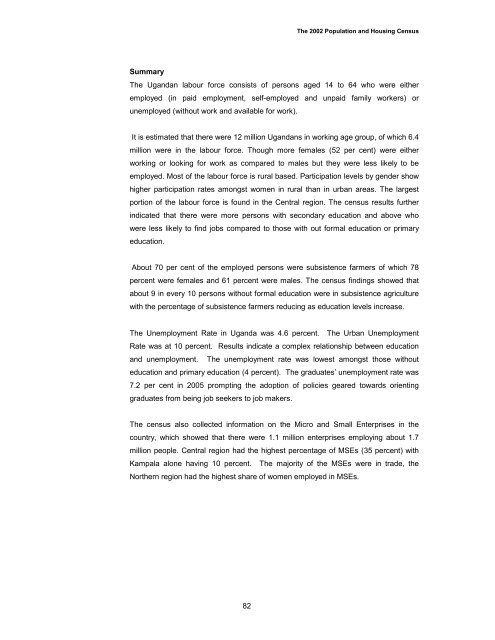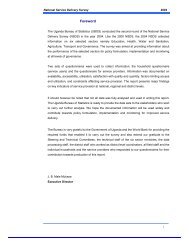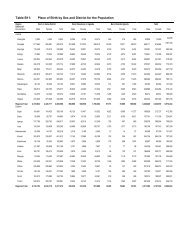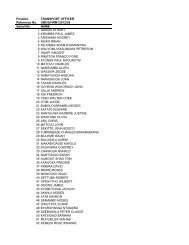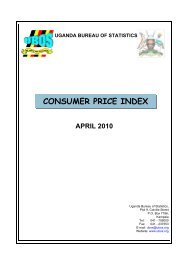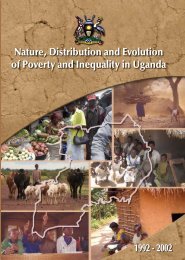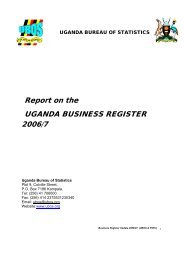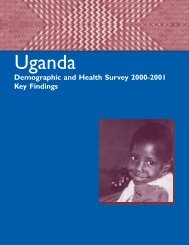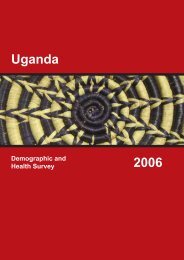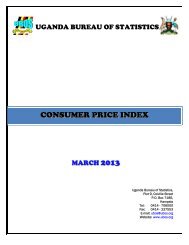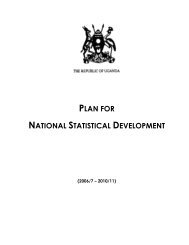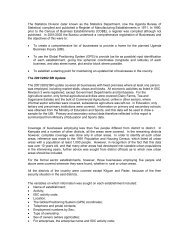Census Analytical Report - Uganda Bureau of Statistics
Census Analytical Report - Uganda Bureau of Statistics
Census Analytical Report - Uganda Bureau of Statistics
You also want an ePaper? Increase the reach of your titles
YUMPU automatically turns print PDFs into web optimized ePapers that Google loves.
The 2002 Population and Housing <strong>Census</strong>SummaryThe <strong>Uganda</strong>n labour force consists <strong>of</strong> persons aged 14 to 64 who were eitheremployed (in paid employment, self-employed and unpaid family workers) orunemployed (without work and available for work).It is estimated that there were 12 million <strong>Uganda</strong>ns in working age group, <strong>of</strong> which 6.4million were in the labour force. Though more females (52 per cent) were eitherworking or looking for work as compared to males but they were less likely to beemployed. Most <strong>of</strong> the labour force is rural based. Participation levels by gender showhigher participation rates amongst women in rural than in urban areas. The largestportion <strong>of</strong> the labour force is found in the Central region. The census results furtherindicated that there were more persons with secondary education and above whowere less likely to find jobs compared to those with out formal education or primaryeducation.About 70 per cent <strong>of</strong> the employed persons were subsistence farmers <strong>of</strong> which 78percent were females and 61 percent were males. The census findings showed thatabout 9 in every 10 persons without formal education were in subsistence agriculturewith the percentage <strong>of</strong> subsistence farmers reducing as education levels increase.The Unemployment Rate in <strong>Uganda</strong> was 4.6 percent. The Urban UnemploymentRate was at 10 percent. Results indicate a complex relationship between educationand unemployment. The unemployment rate was lowest amongst those withouteducation and primary education (4 percent). The graduates’ unemployment rate was7.2 per cent in 2005 prompting the adoption <strong>of</strong> policies geared towards orientinggraduates from being job seekers to job makers.The census also collected information on the Micro and Small Enterprises in thecountry, which showed that there were 1.1 million enterprises employing about 1.7million people. Central region had the highest percentage <strong>of</strong> MSEs (35 percent) withKampala alone having 10 percent. The majority <strong>of</strong> the MSEs were in trade, theNorthern region had the highest share <strong>of</strong> women employed in MSEs.82


